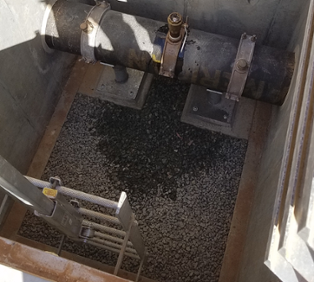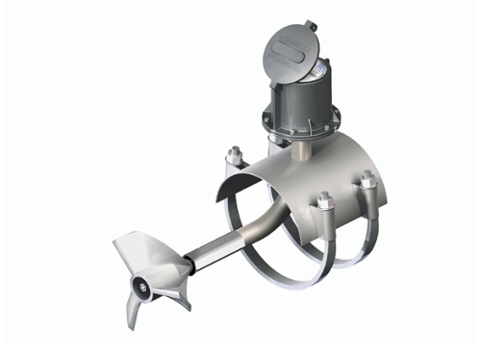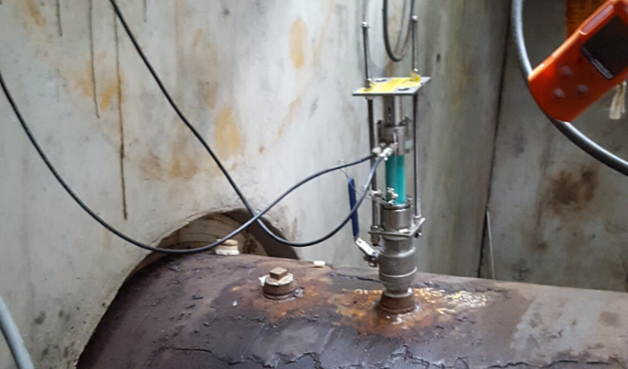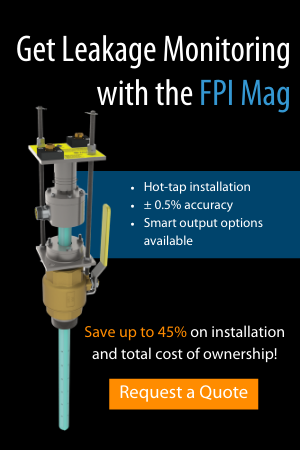The Case for Metering in CA: SGMA, WaterSMART, and Efficient Irrigation Practices
What is the SGMA?
Passed in 2014, the Sustainable Groundwater Management Act (SGMA) outlines a framework for California’s conservation of water resources. Prior to this time, California had no laws or guidelines pertaining to groundwater or irrigation management; irrigators were able to drill a well where needed with minimal oversight, and high demand by both farmers and municipal customers drew down the water table to treacherous low levels.
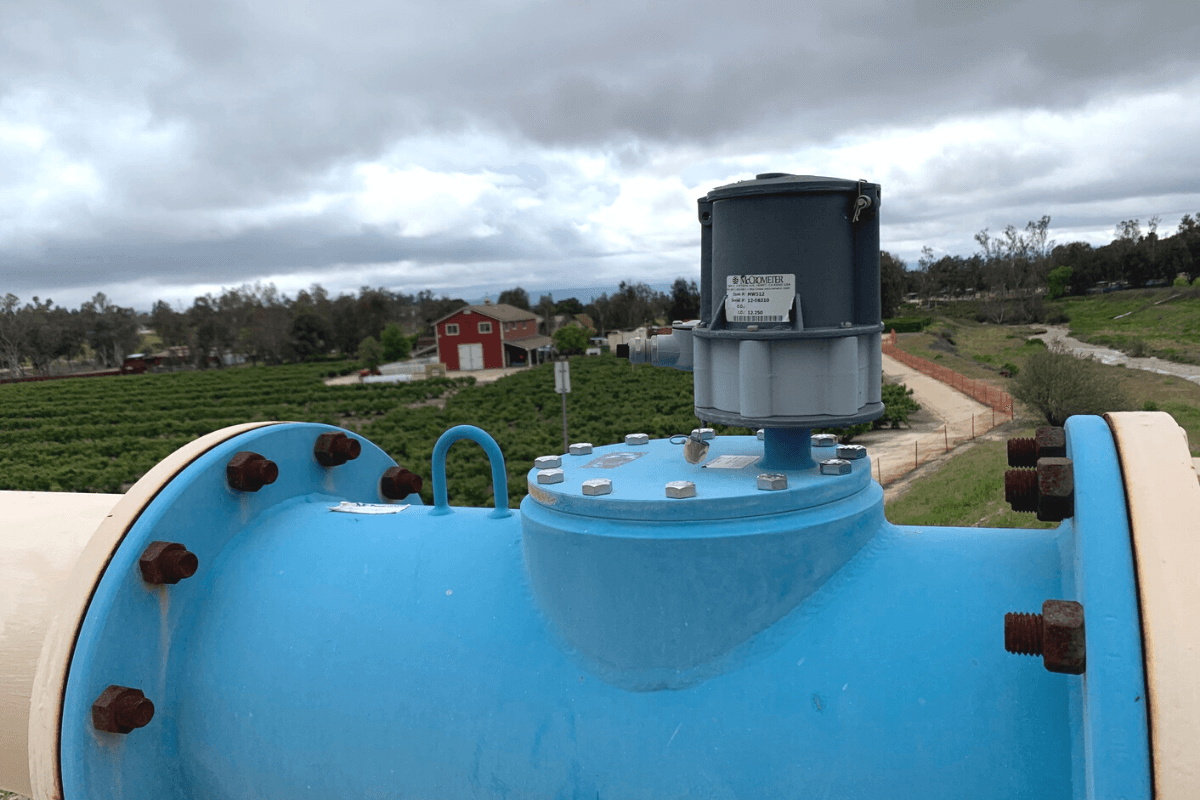
A municipally owned Mc®Propeller installed in front of a California blueberry farm.
Due to the severe drought and water crisis, the SGMA was implemented, requiring the development of groundwater sustainability agencies (GSAs) that were then tasked with drafting groundwater sustainability plans (GSPs) for approval by the California Department of Water Resources (DWR). Many GSAs hired engineering consulting firms to draft the sustainability plans, several of which are either in process or under review by the California DWR.
Current Water Measurement Methods and their Ineffectiveness
California has utilized several methods of estimating water usage and application, such as satellite imagery, forecasting evapotranspiration, and flow rate calculations. Satellite imagery is by far the most popular technique, as it measures groundwater usage as well as other environmental maladies such as subsidence to help bridge the data gap that California has as it pertains to groundwater use.
According to the U.S. Geological Survey, approximately 70% of the world’s available freshwater is used for irrigation – and in drought-ridden areas such as California, the sustainable application of that freshwater is critical. When irrigators must manage irrigation water application at a given location for a specific crop, estimations can fall flat, especially satellite imagery.
Metering for More Efficient Irrigation Management
The best and most equitable method for California’s irrigators and GSAs to manage water usage is through implementation of flow measurement devices such as propeller and electromagnetic (mag) flow meters. Simply put, estimations cannot provide the same accuracy that a permanently installed totalizing flow meter can.
By measuring irrigators’ groundwater usage through satellite imagery, GSAs run the inevitable risk of overregulating some users and underregulating others. The result will likely be reduced production from farmers. Flow measurement allows farmers to accurately measure what they pump and use on their acres of farmland, a more equitable and efficient method of irrigation management.
It’s also a more sustainable method that falls in line with the potential management plans of local GSAs. Many GSAs are looking to implement allocations and begin metering wells to manage the aquifers, and potentially begin a water marketplace program. This practice would allow farmers to buy and sell water allocation to one another as needed – which would require accurate measurement to ensure each irrigator is receiving what they’ve paid for.
Making the Leap from Estimations to Metering
In its current state, the irrigators most likely to make the switch from estimations to metering are those who realize that the quantity they’re pumping isn’t matching up with the satellite imagery. These irrigators, as constituents of their local GSA, can then push for metering – and push to acquire funding from state and federal sources such as the Bureau of Reclamation.
The federal government has allocated a significant amount of budget to various grant programs, such as the WaterSMART program through the Bureau of Reclamation, Small-Scale Water Efficiency grants, and Water and Energy Efficiency grants. These programs and grants will fund flow measurement devices, telemetry, and other water conservation efforts. GSAs have a good chance of demonstrating efficiency if they create a metering and allocation program, and calculate in acre ft/acre what the groundwater savings estimation is.
The State of California has also dedicated considerable funding to water conservation through programs such as Prop 1 and Prop 68. However, to date these funds have been directed to the development of GSPs or structures such as infiltration basins for groundwater recharge. The funds need to be made available to the GSAs for implementation of groundwater management programs that include installation of meters that will also improve on-farm irrigation water management. In addition, matching or leveraging state funds against federal funds (such as WaterSMART) will bring additional funding into the state for groundwater management.
Efficient Flow Meters for California Groundwater Measurement
McCrometer’s Mc®Propeller flow meter is a classic flow meter used by the American farmer since 1955. It’s a rugged, simply made, long-lasting meter that comes with mechanical register, digital register, and telemetry unit options for measurement data. Offered in a variety of configurations such as saddle-style, flanged tube-style, top-plate and more, the McPropeller is the price-conscious flow meter that provides irrigators with accurate, reliable flow data to make informed decisions about irrigation on their farm.
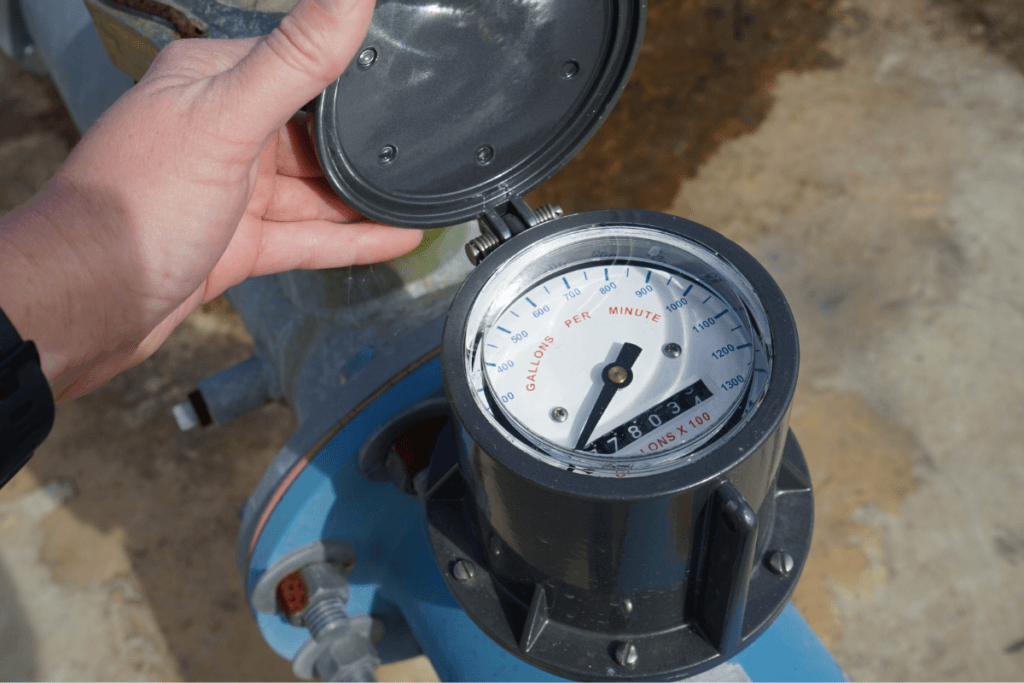
A McPropeller opened for manual data reading.
Electromagnetic (mag) meters are another option for irrigators wanting more functionality, higher accuracy, or greater durability. The Dura Mag™’s fusion-bonded epoxy coating eliminates delamination from the meter body for durability backed by a lifetime guarantee for the meter tube. The McMag2000™, another economical option, offers saddle-style meter convenience with no mechanical moving parts, a great choice for irrigators wanting a quick installation and DIY in-field maintenance.
FlowConnect™ is McCrometer’s telemetry option compatible with the McPropeller, giving irrigators flow data from the palm of their hand. A convenient option for irrigators with remote wells and little time to manually read their meters, the FlowConnect unit relies on cellular signal to send flow data with ExactRead™ technology – meaning that flow data matches exactly from meter to website.
McCrometer’s headquarters and factory are in Hemet, California, run by flow measurement experts experienced in irrigation metering. Since 1955, McCrometer has been a friend of the farmer, committed to manufacturing quality products in the USA. For questions on flow metering in California and how to achieve efficiency with our flow meters, contact the factory or reach out to your local authorized representative.

Related Posts
Featured Posts
3 Reasons Why Budget-Focused Farmers Invest in Integrated Telemetry
Allocating budget to flow technology may seem unjustifiable when funds are tight; flow meters and their electronics may already be installed, giving no reason to replace or add additional units when the current solution is in fine working condition. However, flow...
Small Package, Big Impact: The Importance of Desiccant Cartridge Maintenance
You’ve likely seen a desiccant cartridge, in the form of the small silica gel packet accompanying food products, or the activated carbon packet at the top of pharmaceutical bottles. It’s also commonly used in electronics and near sensors, especially for...
Meeting BABA Compliance and Expanding Opportunities
Content Recorded and Published at WEFTEC in October 2024 In this episode of The Water Online Show: On Location, (now former) McCrometer President Pete Oveson dives into the company's story and recent developments shaping its future. He begins with an overview of...
Request More Information

